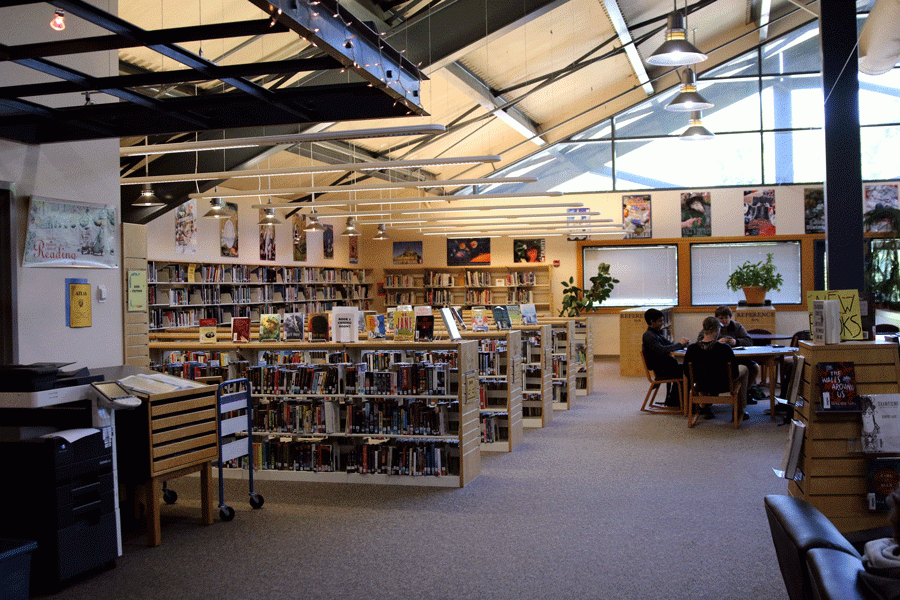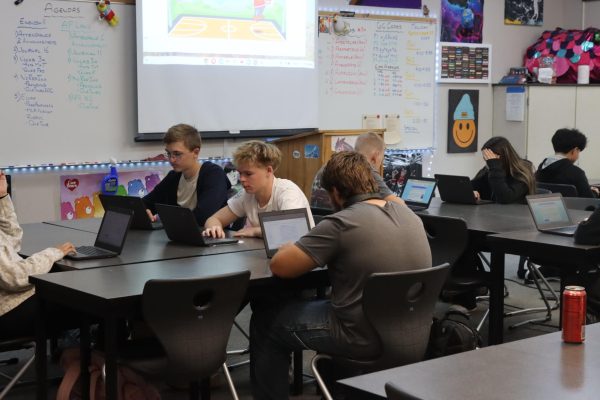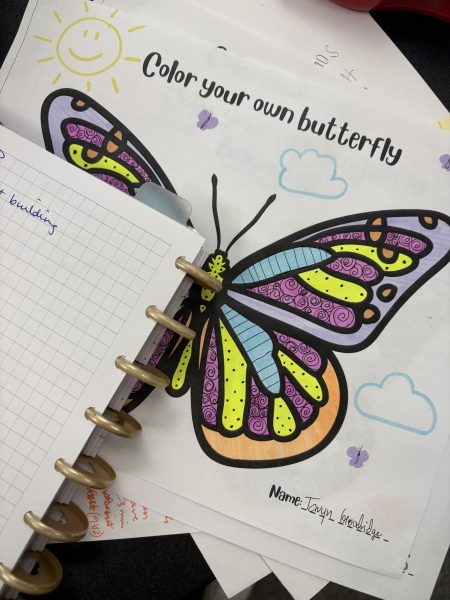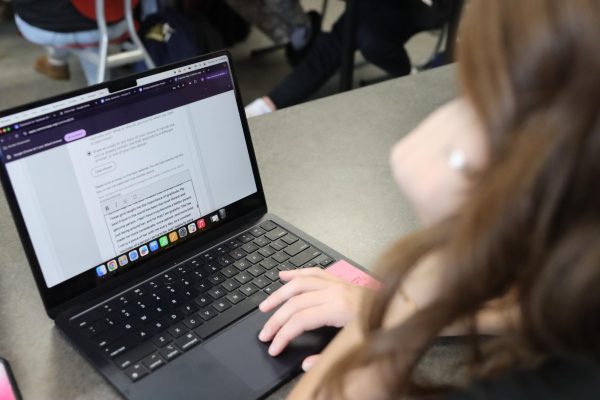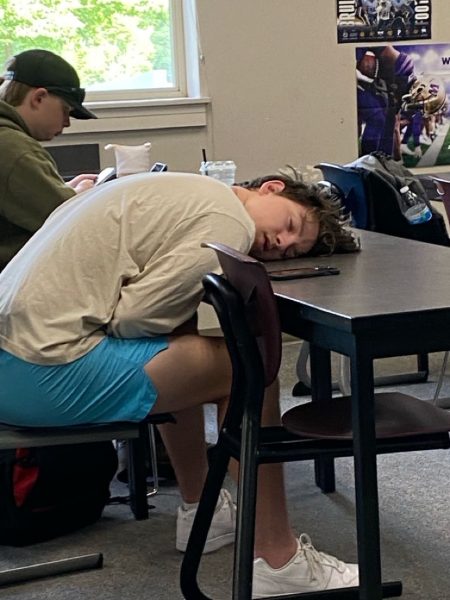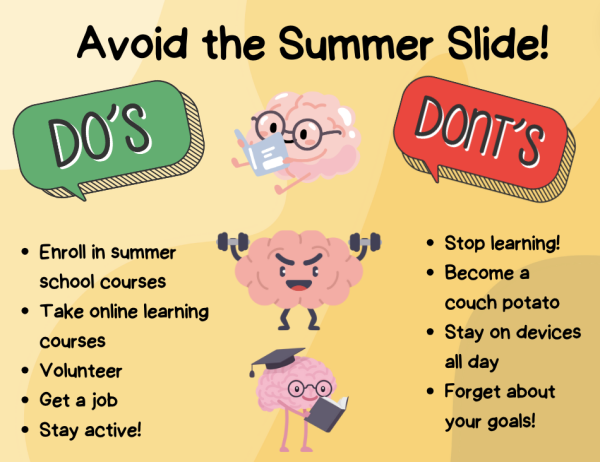The Role of Libraries in Modern Education
Students sit at a table in the back of the library enjoying the quiet atmosphere.
Dating back to the 1700s, libraries have been an essential part of learning in society. They have been huge, physical databases brimming with information for centuries, yet as we progress into the age of technology, libraries have seemingly become less and less relevant. Libraries have received less funding and become less populated as online mediums have become more convenient and accessible for students no matter where they may be. Technology is becoming a greater player in modern education from top to bottom, edging out traditional libraries. With the rise of eBooks and online reading databases, physical books in our school and public libraries keep stocked are remaining unopened and on shelves simply collecting dust. Are we as a society allowing a precious learning tool to slip through our fingertips, or are libraries really that outdated and irrelevant?
Sam Duell (‘19) disagrees with the latter. Duell would rather read from a book than from online material to get his information. He concluded that “libraries are definitely a better resource than researching online. Reading eBooks in my opinion are a lot harder on my eyes than a regular book.” Duell continued, “I think that it’s good to have a library because it is where students can get all their textbooks from, get all their reading done, and find books to do reports on.” Not only does Duell value physical libraries, but he appreciates being in the library. “Libraries are nice because they are going to be quiet and you know you can get work done.”
Sharing Duell’s perspective, Cierra Armstrong (‘18) likes the atmosphere of the library, “because it’s a good place to get your thoughts together.” Although she doesn’t spend much time physically in the library, when given school projects, she “heads straight for books because they are mostly fact. You can’t always trust the internet because there is more opinion on computers.” She continued, “For education, libraries are important because it offers a wider range of information you can get facts on.” Armstrong likes the “classic teaching that’s book based” intertwined with some technology as long as it doesn’t dominate the learning environment.
With this increasing trend of technology replacing physical sources, Mrs. Basset, one of the AHS librarians, has picked up on minute changes within our own library. When students use the library, Mrs. Basset said that, “I’ve noticed the most that more people use internet sources than book sources for research.” Mrs. Basset continued, “I still think of it as a resource for student learning. Some functions may have changed, but that is still the primary purpose.” The librarian does not think that the technological change coming over our modern education hurts student learning in any way, it just changes the means by which we get our information. “Internet makes access to information fairly quick and simple. People just have to be more critical of the information they’re getting because you never know if it’s valid or not. With print sources, it has to go through multiple editors before it’s published.”
Along with the change in use that libraries are facing, a large issue that has arose for our libraries is the decline in funding that they are seeing. Even our own AHS library has faced funds being cut, but not so much due to the declining amount of student usage like you could expect. “Funding has changed because of the state’s funding cuts for education, not because of usage,” said Mrs. Basset. “Money was cut because we had to find places to cut money when the state cut education funding.”
In response to the funding issue, both Armstrong and Duell agreed that libraries should see some more of the state’s funding. “I think they should keep the funding up for libraries, maybe even increase it because for example, the amount of books at the Arlington Public Library is shrinking,”said Duell. “There are a lot less books than years ago, and I would like to see more books back in there.”
This idea of continuing to provide for students is becoming a large focus for libraries everywhere so that they remain a relevant and current source for education. Mrs. Basset explained that the latest trend with libraries across the area is to broaden libraries’ usefulness by calling them the “learning commons.” The Educause “7 Things You Should Know About The Modern Learning Commons” defines the learning commons as “a full-service learning, research, and project space.” The article further explains, “the learning commons brings together the functions of libraries, labs, lounges, and seminar areas in a single community gathering place.” The concept of a learning commons can be extremely beneficial to students learning processes, since “the commons invites students to devise their own approaches to their work and to transfer what they learn in one course to the work they do for another,” as Educause puts it.
Western Washington University in Bellingham has already made this switch, along with other universities across the nation, and Mrs. Basset couldn’t agree more with this new pattern. “I’d like to see the Arlington High School Library grow in this way, where users have access to programs that will help them to produce products, such as video editing or web page building. If one department can’t afford these things, then we have something in a singular place that students can use. We need to continue to provide services to folks that one department alone can’t.”
Given this discussion, it is essential that we reflect on the means by which we are learning and recognize the trends in modern education so student learning continues to thrive. Physical libraries have both practical and sentimental value in the modern education system for students and teachers. However, our libraries today may need some tweaking to effectively service those of our schools and communities in the way that gives us opportunity to immerse ourselves in knowledge completely, equating to a better and more well rounded education.





